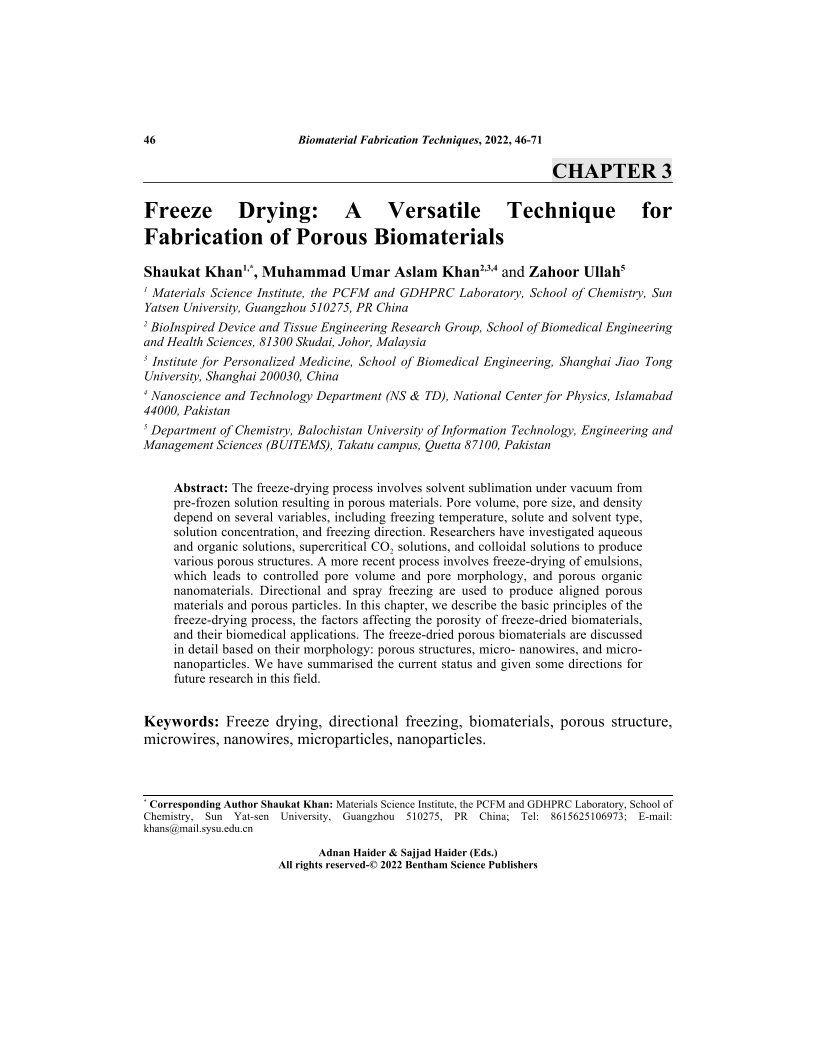Freeze Drying: A Versatile Technique for Fabrication of Porous Biomaterials

- Authors: Shaukat Khan1, Muhammad Umar Aslam Khan2,3,4, Zahoor Ullah5
-
View Affiliations Hide Affiliations1 Materials Science Institute, the PCFM and GDHPRC Laboratory, School of Chemistry, SunYatsen University, Guangzhou 510275, PR China 2 BioInspired Device and Tissue Engineering Research Group, School of Biomedical Engineeringand Health Sciences, 81300 Skudai, Johor, Malaysia 3 Institute for Personalized Medicine, School of Biomedical Engineering, Shanghai Jiao Tong University, Shanghai 200030, China 4 Nanoscience and Technology Department (NS & TD), National Center for Physics, Islamabad 44000, Pakistan 5 Department of Chemistry, Balochistan University of Information Technology, Engineering andManagement Sciences (BUITEMS), Takatu campus, Quetta 87100, Pakistan
- Source: Biomaterial Fabrication Techniques , pp 46-71
- Publication Date: November 2022
- Language: English
Freeze Drying: A Versatile Technique for Fabrication of Porous Biomaterials, Page 1 of 1
< Previous page | Next page > /docserver/preview/fulltext/9789815050479/chap3-1.gif
The freeze-drying process involves solvent sublimation under vacuum from pre-frozen solution resulting in porous materials. Pore volume, pore size, and density depend on several variables, including freezing temperature, solute and solvent type, solution concentration, and freezing direction. Researchers have investigated aqueous and organic solutions, supercritical CO2 solutions, and colloidal solutions to produce various porous structures. A more recent process involves freeze-drying of emulsions, which leads to controlled pore volume and pore morphology, and porous organic nanomaterials. Directional and spray freezing are used to produce aligned porous materials and porous particles. In this chapter, we describe the basic principles of the freeze-drying process, the factors affecting the porosity of freeze-dried biomaterials, and their biomedical applications. The freeze-dried porous biomaterials are discussed in detail based on their morphology: porous structures, micro- nanowires, and micronanoparticles. We have summarised the current status and given some directions for future research in this field.
-
From This Site
/content/books/9789815050479.chap3dcterms_subject,pub_keyword-contentType:Journal -contentType:Figure -contentType:Table -contentType:SupplementaryData105

